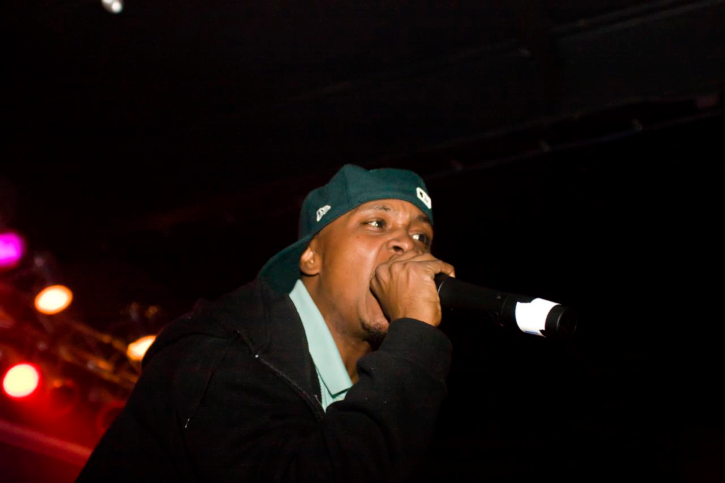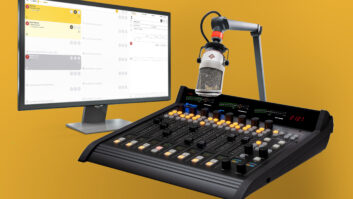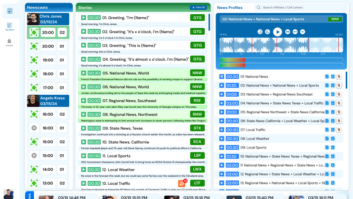The author is membership program director of the National Federation of Community Broadcasters. NFCB commentaries are featured regularly at www.radioworld.com.
A few heads probably turned when a Miley Cyrus single popped up this spring, for reasons beyond the song. “DREAM” features that ethereal, low-key electronica in vogue at the moment, with the pop star weaving stories of parties and debauchery over a snaky beat. And just as the song closes, the light keys of one of hip-hop’s most iconic breakdowns plays; this is no surprise, since pop is, if nothing else, self-referential.
Then, out of nowhere emerges one of rap’s undisputed legends and one probably on the short list for least likely to be on a Miley Cyrus song. Avid music fans know Ghostface Killah from his tenure with the group Wu Tang Clan. But the rapper has since forged a rare career as a unique character and storyteller, with scores of concept songs and even albums to his credit. Ghostface is one of the few hip-hop artists left committed to songwriting in a way that creates an aesthetic reminiscent of an action film or dense drama. He’s been a crime boss, a falsely accused man, a prizefighter, a rebel against authority and countless other characters in songs penned over his long career. Along the way, he’s concocted a lexicon of verbiage, alter egos and mythology that are unmistakably his. The Cyrus song verse is a short one, but it’s impactful. You cannot help but be enthralled by the guy who refers to himself as Tony Stark, also known as Iron Man, and his charisma.
[Read: Community Broadcaster: It’s An Emergency]
How does all this relate to community radio? It is the New York artist’s email forays that may get you thinking about how our time with our closest friends, donors and fans can be equally resonant.
Like so many music performers, Ghostface Killah has been pushed to connect with fans in new ways. For virtually everyone, that’s on social media and their own websites. You can find the Wu Tang Clan member in all those places. He even has a newsletter, promoted as a place to get new music, giveaways and a glimpse of the artist.
Team Ghostface sends out a lot of newsletters. They are short and filled with the non-sequiturs the artist is known for. Each newsletter has a voice and manner a fan would associate with the musician. They are, in fact, so good you might think he wrote them himself. Stories from his glory days, new music or just witticisms, each newsletter is never more than a few hundred words. Yet it is just enough to have you looking forward to what comes next.
Contrast the Ghostface Killah newsletter sometime against your station’s newsletter. What could you learn in this style of communication? A lot, it seems.
Radio folks can be a verbose bunch. We can be talkers and, as a result, have so many words for what we think and feel. Station newsletters can be strikingly similar to the personalities of radio staffers and volunteers. In other words, there is a ton being said. There are paragraphs upon paragraphs about pledge drive, compound sentences about events, and dozens of words about programming. There is enough here to make you wonder how many people really read all this. Moreover, I am reminded of the short, punchy style of newsletter the aforementioned artist employs to promote himself. Is community radio promoting itself in its newsletters as assertively? Are we offering incentives to subscribe and stay subscribed? Or are we perhaps being a little complacent and assuming people will sign up because community radio is what it is and they will just subscribe because of what we say we are.

Try an experiment sometime and send your newsletter to a casual acquaintance. How much of it does she or he read? Perhaps the friend can tell you what she or he did not read, and why. You may discover, in this busy world, people only have so much time and attention. How long your newsletter is, how you write and the personality that comes across, as any marketer will tell you, are crucial issues.
With so many distractions, your voice and how it sticks with people counts. Witness the Detroit Free Press, which speaks online in a way that has created waves of followers. Note the observations about Ghostface’s newsletter; it sounds authentically like him, and fans flock to it for this reason. Does your station have that personality? How can you find it, if not?
Newsletters are more and more a go-to from organizations and artists. Community radio is no exception. Your station should be meticulous with its newsletter and look at every edition as a chance to create lasting impressions.
[Subscribe to our newsletter and get it delivered right to your inbox.]












